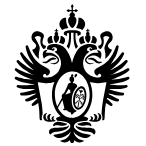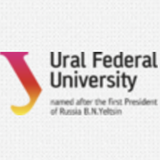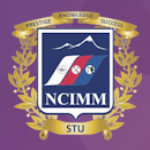Introduction to North Caucasian Institute of Mining and Metallurgy
North Caucasian Institute of Mining and Metallurgy is a public higher education institution in Vladikavkaz, North Ossetia-Alania, Russia, with high professionalism and influence in the field of mining and metallurgy.
Overview
The institute is small in scale, with a student population of 4,000-4,999, offering undergraduate, master's and doctoral degree programs in arts and humanities, business and social sciences, medicine and health, science and technology, engineering and other fields.
History and establishment time
Founded in 1932, its predecessor was a related educational institution established in 1931. It has a history of nearly 100 years of education and has trained a large number of professional talents for the Russian mining and metallurgical industry.
School strength
Faculty: It has 400-499 academic staff, most of whom are industry experts, who can provide students with professional teaching and practical guidance.
Teaching achievements: Graduates are widely employed in mining, metallurgy and related fields, making important contributions to the development of the industry.
Research Strength: The college has carried out a number of research projects in mining and metallurgical technology research and development, resource exploration, etc., and has advanced research equipment and laboratories.
Nature of the college
Public, for-profit higher education institution.
Educational philosophy
Focus on the combination of theory and practice, cultivate students' practical ability and innovative spirit, and enable students to master professional knowledge and skills in practice through cooperation with enterprises and internships, so as to improve their ability to solve practical problems.
Key laboratories and disciplines
Key disciplines: mining engineering, metallurgical engineering, geological exploration, mechanical engineering, etc.
Key laboratories: There are several laboratories related to mining and metallurgy, such as ore analysis laboratories, metallurgical process laboratories, etc., which provide advanced experimental conditions for teaching and scientific research.
Department
There are School of Economics, School of Journalism and Political Science, School of Information Technology, School of Law, School of Natural Sciences, School of Social Sciences, School of History, School of Engineering, School of International Relations, School of Medicine and Health Sciences, School of Arts, etc.
Ranking
Ranked 9478th in the world and 332nd in Russia.
Expenses
Undergraduate course tuition is US$2,500-12,000/year, master's course tuition is US$3,000-15,000/year, doctoral course tuition is US$12,000-20,000/year, and accommodation fee is about US$600/month.
Campus environment
The campus is located in Vladikavkaz, the capital of the Republic of North Ossetia-Alania, with a profound cultural and historical heritage. The college has facilities such as a library and also provides students with sports venues to meet their learning and living needs.
-

Peter the Great St.Petersburg Polytechnic University
-

Moscow State University M. V. Lomonosov
-

St. Petersburg State University
-

Bauman Moscow State Technical University
-

Tomsk State University
-

Peoples' Friendship University of Russia
-

Don State Technical University
-

Moscow Institute of Physics and Technology
-

Ural Federal University
-

Kazan Federal University
-

Mesoamerican University
-

Istmo University
-

Mariano Galvez University of Guatemala
-

Regional University of Guatemala
-

Galileo University
-

Francisco Marroquín University
-

Rafael Landívar University
-

University of the Valley of Guatemala
-

University of San Carlos of Guatemala
-

Technological Institute of Tlaxcala Plateau
-

Golfo University
-

Technological University of South Sonora
-

Technological University of Huejotzingo
-

Tizimín Institute of Technology
-

Chilpancingo Institute of Technology

